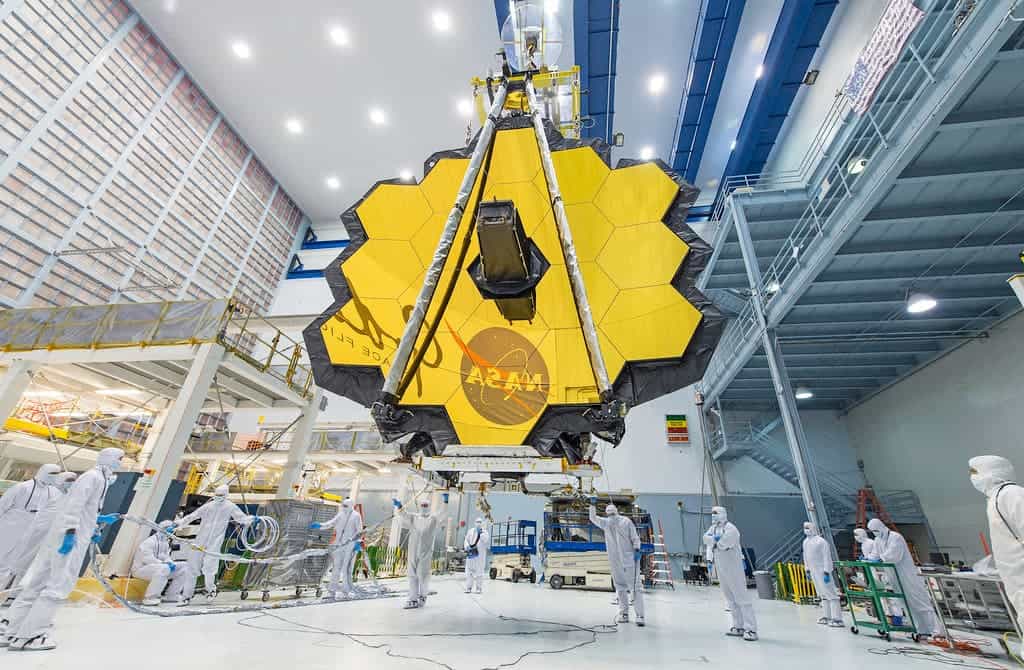The impact was significant and one the mirrors was directly hit, but NASA says it’s not a problem and the telescope is still performing “at a level that exceeds all mission requirements,” despite a “marginally detectable effect in the data.”

Don’t worry about it
The James Webb Space Telescope (JWST) is slowly gearing up and arranging its mirrors, promising to deliver a view of the universe as we’ve never seen before. But outer space is a rough place, and there are always hazards.
Micrometeoroids are one such hazard. A micrometeoroid is a particle about the size of a grain of sand, typically weighing less than one gram — but even one gram can do a lot of damage when it’s traveling at high speeds and when it’s hitting something as fine-tuned as the JWST. Thankfully, NASA says the telescope was designed specifically to withstand this type of impact.
For instance, the telescope’s optical instruments were kept in pristine cleanliness, which ensured optimal reflectivity and improved the telescope’s sensitivity and robustness. The materials from which the mirrors are built (gold-plated beryllium) were also chosen to provide physical resilience. This makes it more resilient not just to physical impacts, but also to time-related degradation.
“We always knew that Webb would have to weather the space environment, which includes harsh ultraviolet light and charged particles from the Sun, cosmic rays from exotic sources in the galaxy, and occasional strikes by micrometeoroids within our solar system,” said Paul Geithner, technical deputy project manager at NASA’s Goddard Space Flight Center in Greenbelt, Maryland. “We designed and built Webb with performance margin – optical, thermal, electrical, mechanical – to ensure it can perform its ambitious science mission even after many years in space.”
Since launch, the telescope was hit by four micrometeoroids, which is within expected parameters, but the last one didn’t come from any meteor showers and it was an unexpected chance event (the telescope can turn away from meteor showers if they are predicted). It was also slightly larger than NASA anticipated, and produced detectable but perfectly manageable damage.
In time, the JWST team will monitor all these impacts and get a better understanding of their frequency and impact, adjusting the telescope operations accordingly. Each of the telescope’s 18 hexagonal mirrors are fully adjustable, so they can change orientation individually.
“With Webb’s mirrors exposed to space, we expected that occasional micrometeoroid impacts would gracefully degrade telescope performance over time,” said Lee Feinberg, Webb optical telescope element manager at NASA Goddard. “Since launch, we have had four smaller measurable micrometeoroid strikes that were consistent with expectations and this one more recently that is larger than our degradation predictions assumed. We will use this flight data to update our analysis of performance over time and also develop operational approaches to assure we maximize the imaging performance of Webb to the best extent possible for many years to come.”
This extraordinary observatory has been expected for more than a decade. Heralded as a “new-generation Hubble”, the JWST must work like clockwork: it’s orbiting the Sun in a position that keeps it too far for any visits or servicing, and unlike Hubble, it can’t be fixed or repaired — so if something goes wrong, it goes very wrong. But so far, NASA seems to be managing everything very smoothly.
The telescope, which was launched on Christmas, is still being calibrated but by all accounts, it appears to be working better than expected. The micrometeoroid impact will produce no changes to the operations calendar.
The JWST has four main goals: to search for light from the very first stars and galaxies that formed in the universe, to study galaxy formation and evolution, to study planetary and stellar formation, and to study planetary systems and gain insights into the origin of life. NASA announced the first full-color images from JWST in mid-July. The agency hasn’t said what these images will focus on, but it should be very good.


